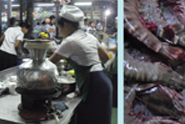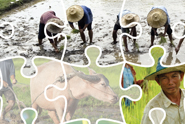Name: Tun Thura Thet
Age: 42
Main Company: MIT Co. Ltd
Profession: IT Professional
mi: When did you start your first business in Myanmar, and is it still operational today? If so, how has the business model changed from when you first started?
ttt: I returned to Myanmar after graduating from Australia in 1997 and started the MIT. We started as a software company with seven people and now we are an outfit of more than 300 staff.
From 2009 onwards we moved into system integration, offering Microsoft, Oracle and SAP solutions, transforming ourselves from purely an ISV (Independent Software Vendor) to a SI (System Integrator).
Currently, our clientele include 23 of 24 local banks running our software solutions and our total revenue has been gaining significant growth every year, half of it coming from overseas. So in fact, it’s not a change of business model, rather a change of strategy deciding to co-operate instead of compete with global software giants.
mi: What made you decide to diversify your business interests?
ttt: In fact, we did not diversify. We expanded our market and the industry we serve only. I wanted to participate in sectors where I have expertise and knowledge.
mi: Do you see any of your main business interests having to change or adapt to Myanmar’s new trends and it’s opening up to international markets?
ttt: 2011 represented a major change in the IT landscape here with most of the global software powerhouses coming into Myanmar. So it’s either compete with them or join them for us. We decided to join them and started offering products and services combination solutions as a system integrator.
mi: With the benefit of hindsight, would you have done anything differently when you started your first business, and why?
ttt: Not really. The only thing would be false hope that I have had after coming back to Myanmar too early. I thought the change was going to take place then. I tried hard to survive and grow looking for opportunities in the limited and sanctioned market. When the top two banks collapsed in 2003, I had no choice but to go back overseas in search of better opportunities again.
So because of the early arrival, it has taken me a long time to reach where I am today. I did learn a lot along the way at the same time. On the other hand, this has also been our advantage to be in the market earlier and stronger than the competitors even before the country started to open up. mi: How do you feel that foreign companies now entering into business here will affect the local workforce, and do you feel that they will bring new opportunities to existing local businesses?
ttt: It is inevitable. It is globalization.
The only thing we can do is be prepared and be proactive to adapt to the change. We built up the capabilities and caliber of our staff.
In fact, even bigger set ups such as YTP (Yatanarporn Teleport) or MTP (Myanmar Telecom and Post) are having to prepare for competition for talent from incoming Telenor and Ooredoo.
Software powerhouses such as Microsoft, Oracle and SAP are coming into Myanmar and they will attract talented staff from all local firms. We have already experienced our talent outflow to foreign companies such as NTT Data, Daiwa, etc. We revised salaries for selected staff and had to let some below average staff go, as we cannot compete with foreign players on pay scale.
In fact, this problem existed long time ago, even before Myanmar opened up. At that time, the wage gap was even higher as the talented can go to countries such as Singapore and find greener pastures. So we were already prepared somewhat. I do realise that it will be tough for many small players, as they may not be able to raise their staff salaries and benefits.
For opportunities for local businesses, I felt that we had come in and waited for Myanmar to open up. When it actually opened up, especially in the IT sector, it turned out that big projects such as the Stock Exchange and Central bank, all the businesses went to foreign companies. Of course, I have to acknowledge that their respective governments are funding the project as well.
Foreign IT companies coming into Myanmar these days are targeting to take a share of the Myanmar market. Some want to give jobs back to locals for outsourcing and software development activities. But I think the former group is the majority.
Having said that, opening up is always better than a protectionist approach.
mi: From a business standpoint, what do you feel are the biggest challenges facing you in the next 1-3 years?
ttt: The main challenge would be human resources. Our country has a sub-standard education system. We have almost all the required skills of modern business missing from the majority of our local graduates. It is a national challenge for us. However, I believe we can overcome this together if we accept our weaknesses and work hard to catch up with the developed countries.
The second challenge would be infrastructure. Even though new players have been admitted into the telecom industry, things such as an internet backbone is still yet to be upgraded.
Last but not least, political stability. Without that, there will not be economic growth.
mi: If you were, hypothetically, entering into business for the first time in Myanmar, what type of business would you consider as having the most growth potential?
ttt: I still believe it is IT, even though entry right now would be a bit late. There is a global phenomenon of IT growth and IT companies having high valuations due to high value add, e.g., Skype got a better valuation than Nokia during Microsoft’s acquisition. And if the tech startups do it right, they can still be on par with their larger counterparts in 2-3 years time.
mi: How do you see Myanmar comparing with its Asian neighbours in the short and long-term future?
ttt: Among the Asian countries, the closest ahead of us and the most similar one is Vietnam. Myanmar has ten times more potential than Vietnam. We are in between two global giants of India and China. We are hungry as we had waited for a long time for this opportunity. It would take like five to ten years to catch up, economic wise, assuming we do not go back to the previous style of dictatorship. Education wise, it would take much longer like ten to twenty years to catch up to the developed countries like Singapore.
mi: If you could make one major change in the country for any of your business ventures, what would it be?
ttt: I just wish for political stability. The rest we can all work hard to achieve. I believe political stability can be achieved through fair competition and clean elections.
mi: You mentioned about HR and competency issues facing the country. How far did you participate in the IT training arena?
ttt: IT training can be on the job as well as formal training. We do offer on the job training for our staff. We also previously joined the business training programmes. We eventually quit as it was too much work and we wanted to focus on our core business. We eventually want to tie up with universities to offer internships or attachments for their students.
mi: What advice would you give to someone looking to start up a business and invest in Myanmar?
ttt: Do it fast. Do it now. Do your homework, study MIC investment laws, regulations and markets. And don’t take too long to do that, too
















